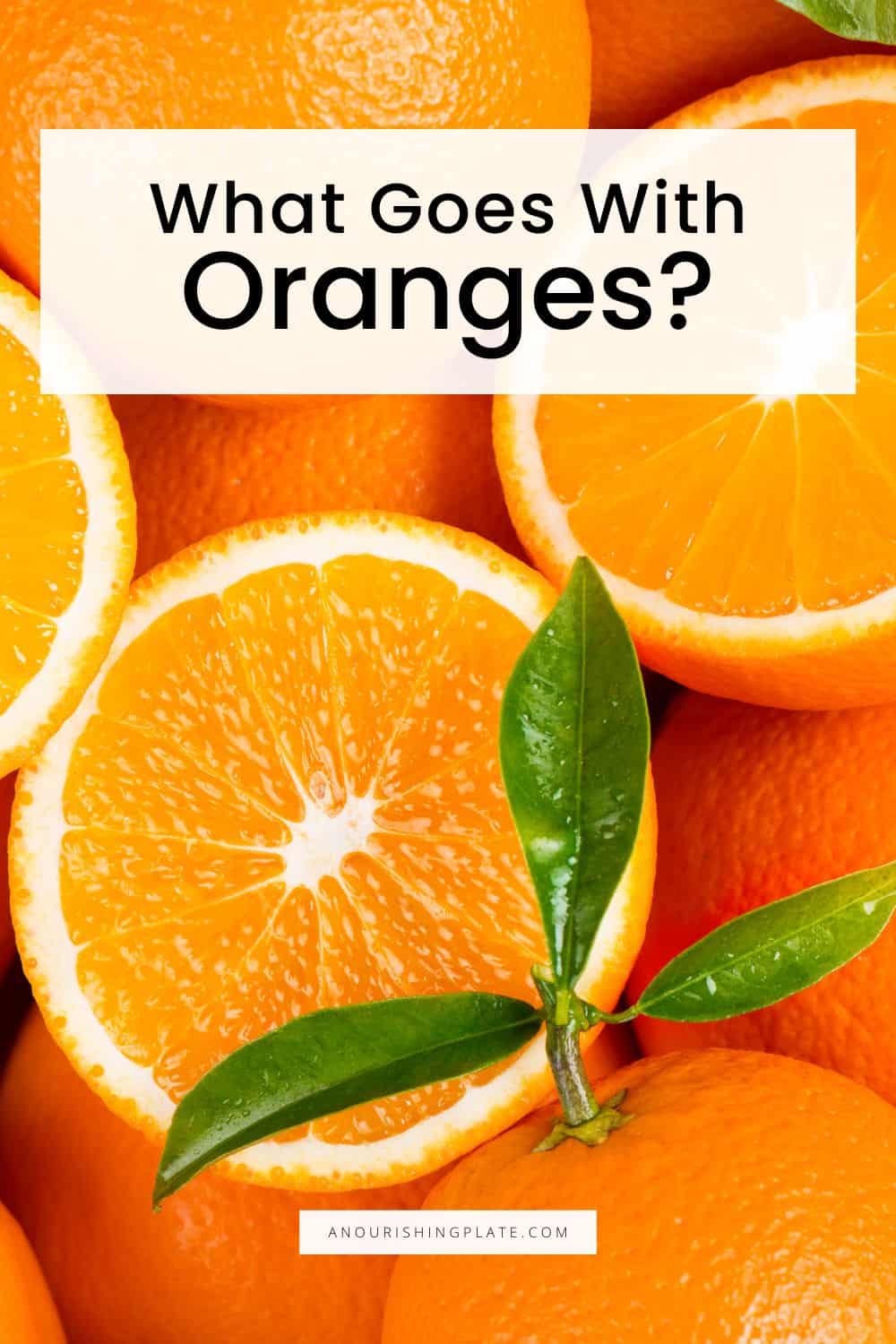What Goes With Oranges?
Wondering what goes with oranges? Learn the best ingredient pairings, meal ideas, popular flavor combinations, and other helpful tips.

Knowing what goes well with oranges gives you a starting point for putting meals together using the ingredients you already have on hand.
Whether you want to reduce food waste, get more creative in the kitchen, or improve your cooking skills, it starts with understanding what flavors already pair well together.
Orange Varieties
Oranges are actually a hybrid of two citrus fruits: the pomelo and the mandarin. They were first cultivated in China thousands of years ago, but now there are more than 400 varieties of oranges grown around the world.
Each variety has its own unique flavor and appearance with varying levels of juiciness, sweetness, and tartness. Here are some of the most popular orange varieties:
Navel Orange
Navel oranges are the most popular orange for eating in the U.S. They’re sweet and juicy, have a thick peel, and are typically seedless. This variety tries to grow a second orange at the base of the fruit, resembling a human belly button. Which is how it got its name.
Valencia Orange
Valencia oranges are named after Spain but originated in southern California in the 1800s. They have a very sweet flavor and are primarily used for juicing, but can also be eaten.
Bitter Orange
The bitter orange is sometimes known as a Seville orange or sour orange. As the name suggests, this orange is lacking sweetness therefore it isn’t eaten alone or juiced. The peel is incredibly fragrant and is used as a flavoring or spice. It’s commonly used in marmalade and beer, while the juice is used in marinades.
Mandarin Orange
Mandarin oranges are a small, sweet, and easy-to-peel variety that is great for snacking or adding to salads since they are seedless. There are over 200 varieties because of how easily they are hybridized with other citrus varieties. The three most popular mandarin varieties in the U.S. are clementines, tangerines, and satsuma (a Japanese, cold climate variety).
Tangelo
The tangelo is a cross between a tangerine and a pomelo with a sweet-tart flavor. They have reddish-orange skin and a distinctive nipple at the stem. The fruit is often seedless, but some may contain up to 20 cream-colored seeds depending on the variety of tangelo. They can be juiced, eaten plain, added to sauces, cocktails, and in many other ways you’d typically use a navel orange.
Blood Orange
Blood orange is a variety of orange that is smaller in size, more aromatic in flavor, and has flesh that ranges in color from ruby pink to blood red, hence the name. The skin is thick and ranges in colors from orange to deep purple/red.
The flavor of a blood orange is sweet, tangy, and tart similar to an orange mixed with a raspberry, which is also why it’s sometimes referred to as raspberry orange. Enjoy them raw, in juice, or make blood orange curd.
Cara Cara Orange
Cara cara is a type of navel orange that was discovered in Venezuela in 1976. This variety looks like an orange from the outside, but once cut into, a ruby, pinkish-red flesh is revealed that looks similar to a grapefruit. Cara cara oranges have a sweet flavor, are seedless, and taste delicious eaten on their own, but are also great in salads or juices for a bright pop of color.
Helpful Tips
When to Buy
Oranges are in season from November through May. Look at the seasonal produce guide to see what else is in season right now.
How to Store
As with other citrus fruits, store oranges in a cool spot. They’ll keep on the counter for about 4 days. To make them last longer, you’re better off storing them in the crisper drawer (uncut) in the refrigerator where they’ll keep for a couple of weeks.

What Goes Well With Oranges?
Vegetables
Arugula, beets, carrots, fennel, garlic, ginger, greens, lemongrass, onions: esp green and red, pumpkin, rhubarb, romaine lettuce, sweet potatoes, watercress, and winter squash.
Fruit
Apples, apricots, avocado, bananas, blackberries, blueberries, cherries, coconut, cranberries, figs, grapefruit, guava, kumquats, lemons, limes, mangos, melon, nectarines, papaya, passion fruit, peaches, pears, persimmons, pineapple, plums, pomegranates, quince, raspberries, strawberries, and tomatoes.
Spices
Anise seeds, black pepper, cardamom, cinnamon, cloves, cumin, kaffir lime leaf, paprika, poppy seeds, saffron, salt, and star anise.
Herbs
Basil, chile peppers, chives, cilantro, flat-leaf parsley, mint, rosemary, and thyme.
Nuts
Almonds, chestnuts, hazelnuts, pecans, pine nuts, pistachios, macadamia nuts, and walnuts.
Non-dairy/dairy
Buttermilk, caramel, cheese (goat, ricotta), cream (coconut cream or cashew cream for dairy-free), ice cream, and yogurt.
Proteins
Chicken, crab, fish, game, meats, pork roast, scallops, shrimp, and veal.
Pantry Items
Almond liqueur, black olives, brandy, dark and white chocolate, coffee, cognac, dates, granulated brown and white sugar, honey, maple syrup, oats, olive oil, orange liqueurs, prunes, rum, raisins, rice, tea, vanilla, vinegar: rice and sherry vinegar, wine: red, sweet, and white.

Popular Orange Pairings
- anise + chocolate
- dried figs + anise + walnuts
- basil + sugar
- chocolate + pistachios
- cinnamon + honey + saffron
- seafood + tarragon
What To Do With Oranges
Oranges can be used in both sweet and savory dishes. They’re a popular ingredient in desserts such as carrot cake, custards, pastry crust, sorbet, curd, meringue, and coconut rice pudding.
They’re also a common ingredient in cranberry sauce, fruit salad, juice, smoothies, and cocktails.
Use oranges in savory dishes when making Chinese orange chicken, in leafy green salads, or as a marinade for ceviche or steak fajitas.

